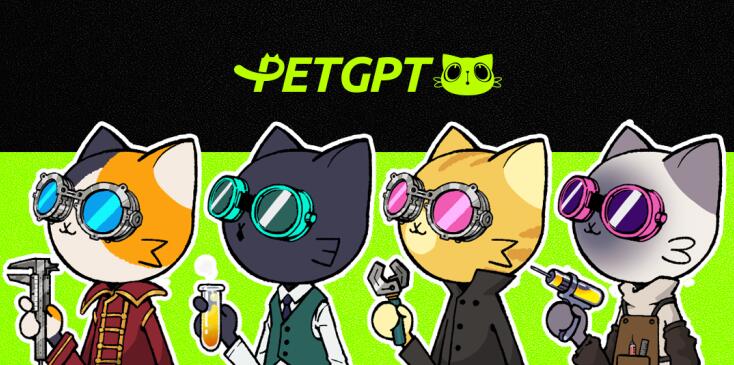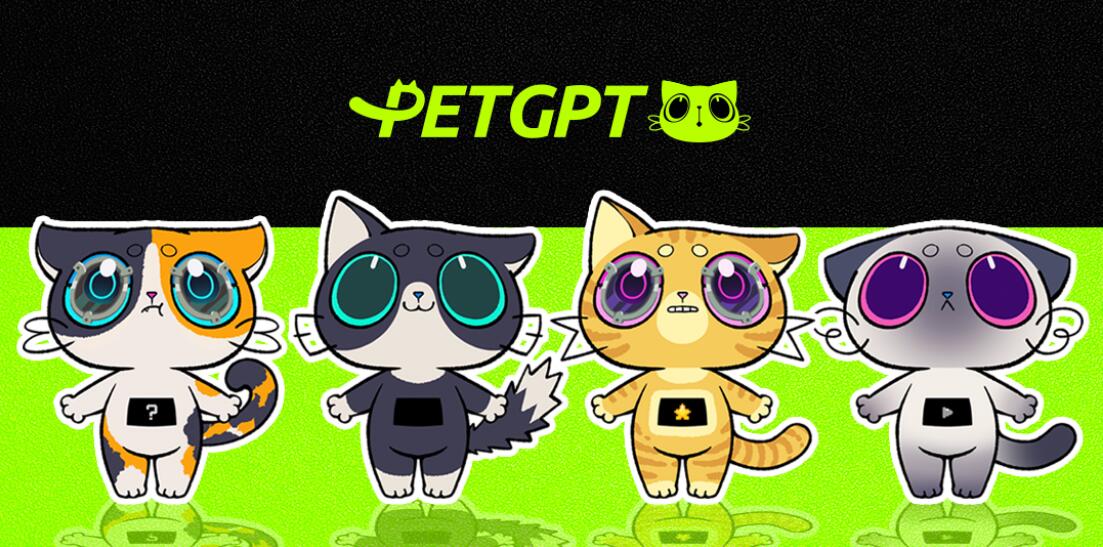SINGAPORE , June 15, 2023 (GLOBE NEWSWIRE) -- Recently, PETGPT, a pet companion app, initiated a closed beta on the Arbitrum Testnet. Apart from the vivid and adorable cat designs, the breakthroughs made in the product's mechanics have the potential to bring a new paradigm to AI+Web3.
NFT+SBT Dual Model: Bringing Vitalik Buterin's SBT Concept from Ideal to Reality
In the past, blockchain games used NFTs as the entry barrier, requiring users to purchase NFTs to participate in the gaming system and earn token rewards. Axie and StepN are examples of this model, which had the advantage of creating a rapid wealth effect through NFT price speculation, leading to a short-term surge in product popularity. However, this approach had its drawbacks: the speculative NFT prices raised the entry barrier for subsequent players, and the disruption of capital flow made it difficult for the entire economic system to sustain.
PETGPT creatively adopts the NFT+SBT dual model, where NFTs are freely minted and can be traded on secondary markets. The core utility of NFT ownership is the ability to hatch SBTs (which are used for game nurturing, with NFT hatching being the only means of SBT production), and for each hatched SBT, NFT holders receive 30% of the Mint income, making NFT equivalent to a perpetual earning machine. For example, assuming the cost of hatching an SBT is 0.05 ETH, if CZ currently holds an NFT, whenever a player uses CZ's NFT for hatching, 0.015 ETH will automatically be transferred to CZ's address via a smart contract.

The Genesis Cat NFT
Additionally, this model has the advantage that SBTs cannot be traded on secondary markets, meaning all players have the same entry barrier, and the amount of income they earn within the game depends on their performance. Furthermore, the team uses this model to convey a value proposition: pets, whether in the real world or the virtual world, are our family members, and not abandoning them is the utmost respect we can show.

The Pet cat SBT
Say Goodbye to P2E Economic Mechanism: Incentives Directed to Outstanding Players
Economically, PETGPT has opted to lean towards traditional gaming, abandoning the conventional P2E (Play-to-Earn) model commonly found in GameFi. The P2E model relies on continuous token inflation to incentivize participants, whether through a single token or dual tokens, but it fails to completely solve the problem of massive token dumping in the game. Additionally, traditional blockchain games, aside from NFT and token sales, often have weak business models, unable to generate revenue through product mechanisms, which is a key reason for a flash in the pan.
PETGPT follows the economic philosophy of traditional games in its design, as it has been tested and proven numerous times: Taking product playability as the starting point, designing monetization points based on this foundation, making the product itself revenue-generating, and allocate a portion of the income to incentivize players with exceptional performance. This approach is somewhat reminiscent of the enduringly popular turn-based online game "Fantasy Westward Journey," which has been thriving for nearly 20 years.
Furthermore, as indicated in the whitepaper, the platform has plans for token issuance, with 20% dedicated to ecosystem incentives and 2% allocated for airdrops to players.
GPT-4 may be ensures a solid foundational experience and quick deployment, but small models are the crux and core of PETGPT.
AI's impact on games is multifaceted: except deploying large-scale intelligent NPCs, emergent narrative generation, to intelligent mission/level design, the most significant impact lies in endowing virtual characters within games with souls, achieving a thousand faces for a thousand players. Currently, PETGPT is built on OpenAI's GPT, which ensures a solid foundational experience and quick deployment. Each player, while conversing with their own cat, is also training it. However, since GPT is a large-scale model designed as an all-knowing superbrain, in the vertical domain of pet companionship, it is more suitable for domain experts in the specific vertical field-small model. It is understood that the PETGPT team is already preparing for the development of small models, accumulating massive amounts of data gradually, training a large and powerful model using OpenAI, and using that model to optimize the small model. This optimization compression technique involves knowledge distillation and model pruning, allowing the small model to maintain fast inference speed while achieving comparable or similar results to the large model.
One can envision a future day where a variety of independent and uncontrolled small cats exist on the blockchain, free-spirited and serving as embodiments and interactive entities for humans to roam the Metaverse.
This is precisely PETGPT's ultimate vision: to restore freedom to players.
